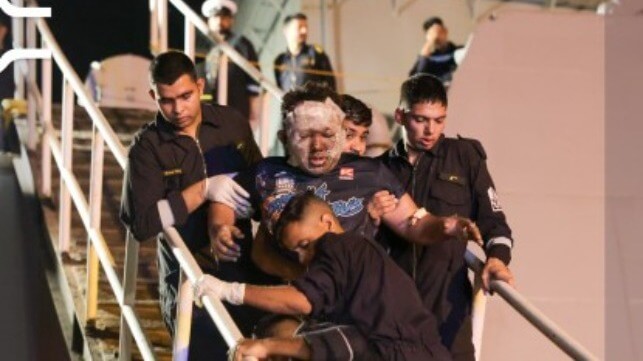11 Survivors of Houthi Missile Attack Return Home, Two Remain in Hospital

The surviving crewmembers of the bulker True Confidence have begun to return to the Philippines, and 11 of them arrived in Manila on Tuesday.
With financial assistance from the Philippine government, the survivors flew home from the port city of Djibouti, arriving to find a press conference and a formal welcoming committee. Two other survivors who were badly injured in the attack are still in Djibouti, receiving hospital treatment, and will be repatriated once they recover. All of the survivors have received about $1,000 in cash aid from officials at the nearest Philippine embassy (Cairo).
One of the survivors had to have a leg amputated, according to ISWAN - an injury that usually rules out a return to the seafaring life.
The bodies of three deceased crewmembers remain aboard the damaged ship, and recovery of the remains will have to wait until the vessel is towed to the coast for salvage, according to the Philippines' Department of Migrant Workers. A salvage tug has been chartered for the task, and the job carries unusual risks: a French frigate had to defend the salvors from a renewed Houthi drone attack last weekend.
17 Filipino seafarers from the hijacked car carrier Galaxy Leader remain in Houthi custody, and while they are alive and safe, the Philippine government's monthslong attempt to negotiate their release has been unsuccessful. “The Houthis are consistent in their statement that it would need an end to the war in Gaza before they will release the ship or seafarers,” Philippine migration official Eduardo Jose de Vega agency said at a briefing Tuesday.
Because of the ongoing safety risk from Houthi attacks, seafarers' union Nautilus has called on shipowners to reconsider whether they have an essential need to navigate through the Red Sea, or whether they could take the long way around the Cape of Good Hope instead. Traffic on the Red Sea-Suez route has fallen by roughly half since December, according to the Suez Canal Authority and the IMF PortWatch program, but roughly 30 ships a day still continue to transit the high-risk zone off Yemen.
